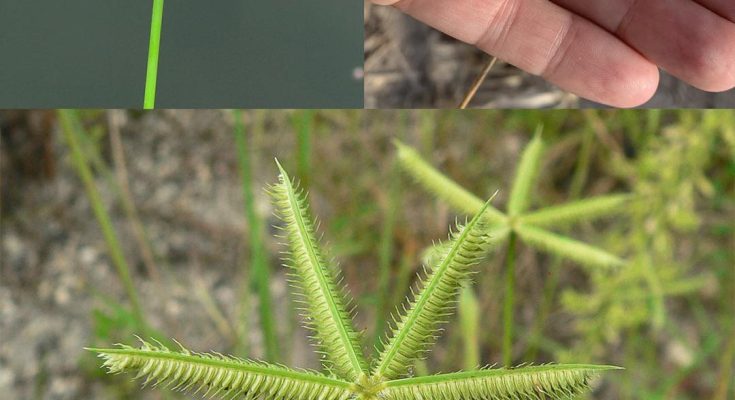Crowfootgrass, scientifically known as Dactyloctenium aegyptium, is a resilient grass native to tropical and subtropical regions. Often classified as a weed, this grass thrives in various environments, from agricultural fields to disturbed soils. While it is widely recognized for its invasive nature, many overlook the potential health benefits it may offer. Used in traditional medicine across several cultures, Crowfootgrass harbors some intriguing properties that could offer natural remedies for various health issues. In this article, we will explore its health benefits, homemade uses, and precautions.
Health Benefits of Crowfootgrass
- Antioxidant Properties
Crowfootgrass contains antioxidants that help neutralize harmful free radicals in the body. Antioxidants are vital for preventing oxidative stress, which is linked to chronic diseases such as cancer and cardiovascular issues. Extracts from the seeds and leaves of Crowfootgrass have shown significant free radical-scavenging activities, making it a potential natural remedy for maintaining cellular health. - Anti-inflammatory Benefits
Crowfootgrass is traditionally used in some cultures to reduce inflammation. It can be applied topically to alleviate symptoms of inflammation, including swelling, pain, and redness. This makes it a candidate for treating minor wounds, sprains, or inflammatory skin conditions. - Antimicrobial Activity
Crowfootgrass has demonstrated antimicrobial properties, particularly in fighting off bacteria such as Escherichia coli and Staphylococcus aureus. These antimicrobial properties suggest that Crowfootgrass could potentially help with minor infections when used topically or as a natural antiseptic. - Wound Healing
In traditional medicine, the paste made from Crowfootgrass is applied to wounds for its wound-healing properties. It is believed to speed up the healing process and reduce the risk of infection. This aligns with its anti-inflammatory and antimicrobial effects, which may contribute to faster recovery from minor cuts or scrapes. - Gastrointestinal Relief
Crowfootgrass has also been used to treat digestive issues such as constipation and diarrhea. The grass is thought to contain compounds that help regulate bowel movements, offering relief from various gastrointestinal discomforts. Some traditional healers brew Crowfootgrass tea to address these issues, though more research is needed to confirm its efficacy. - Anti-diabetic Potential
Preliminary research suggests that Crowfootgrass might help regulate blood sugar levels, making it a possible complementary remedy for managing diabetes. While these findings are promising, further studies are necessary to solidify its role in blood sugar management.
Homemade Uses of Crowfootgrass
- Crowfootgrass Tea for Digestive Health
To harness its gastrointestinal benefits, Crowfootgrass can be brewed into a tea. Simply boil a handful of dried grass in water for about 10 minutes, strain, and drink. This tea may help soothe digestive problems, such as bloating or irregular bowel movements. However, moderation is key, as too much of any herbal remedy can sometimes have the opposite effect. - Topical Application for Wound Healing
To use Crowfootgrass for wound healing, grind the fresh leaves into a paste and apply it directly to minor wounds or skin irritations. This can help reduce inflammation and promote faster healing. The antimicrobial properties of the grass can also help keep infections at bay. - Skin Soothing Poultice
Crowfootgrass can be made into a poultice to soothe inflamed or irritated skin. Blend the leaves with a small amount of water to create a paste, and apply it to the affected area. Leave it on for 20–30 minutes before washing it off with lukewarm water. This homemade treatment may help reduce redness, itching, and swelling. - Antioxidant-Infused Oil
Infusing Crowfootgrass into a carrier oil, such as coconut or olive oil, can allow you to use its antioxidant properties for skin health. Heat the oil with dried Crowfootgrass on low heat for about 30 minutes. Strain and store in a cool, dark place. Use this antioxidant-rich oil to moisturize the skin or massage into inflamed areas for relief.
Crowfootgrass, though often dismissed as a pesky weed, possesses surprising health benefits when used correctly. From its antioxidant properties to its role in traditional remedies for wound healing and digestive health, it offers several natural solutions for common ailments. However, as with all herbal remedies, it is essential to use Crowfootgrass responsibly.
Disclaimer
While Crowfootgrass has promising health benefits, it is crucial to exercise caution when using it for medicinal purposes. The grass has not been extensively studied in modern clinical trials, and there may be side effects or interactions with medications. Pregnant or breastfeeding women and individuals with underlying health conditions should consult a healthcare provider before using Crowfootgrass. Additionally, improper identification of the plant or using it in excessive quantities may result in unintended health risks.
By tapping into the natural world around us, we can discover many hidden gems like Crowfootgrass, offering health benefits and practical uses. But always remember: when it comes to natural remedies, moderation and safety are key.



